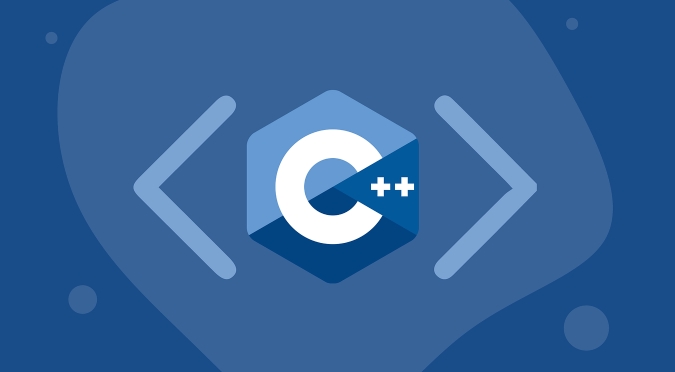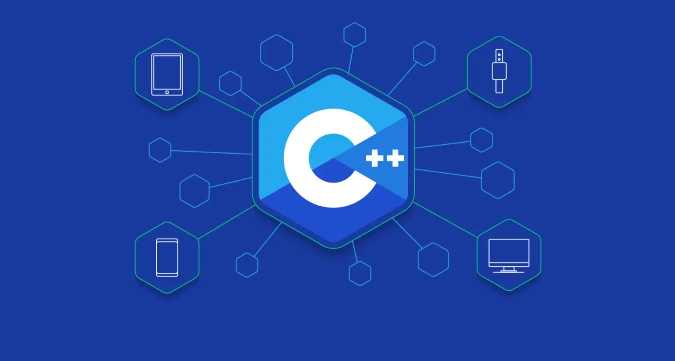What is the Curiously Recurring Template Pattern (CRTP) in C ?
Jul 05, 2025 am 12:59 AMCRTP is a C static polymorphic design pattern, and its core is the inheritance of the derived class itself by the base class template parameter. 1. The definition method is that the base class uses a template to accept the derived class as a parameter, and the derived class then inherits the base class instance; 2. Its advantage is that it parses the method call during compilation to avoid the overhead of running virtual functions; 3. It is often used in static polymorphism, code reuse, interface uniformity and mixed behavior scenarios; 4. When using it, you need to pay attention to the correctness of type delivery, lack of dynamic binding, increased debugging complexity and possible code bloating problems.

CRTP (Curiously Recurring Template Pattern) is a common static polymorphic design pattern in C. Its core idea is to let a base class inherit from a derived class using template parameters. That is to say, the derived class passes itself as a template parameter to the base class.

This way of writing looks a bit strange, but it is actually very practical. It can implement polymorphic behavior without using virtual functions, avoiding runtime overhead.

How to define and use CRTP
The basic structure is as follows:
template <typename Derived>
class Base {
public:
void interface() {
static_cast<Derived*>(this)->implementation();
}
};
class Derived : public Base<Derived> {
public:
void implementation() {
// Implementation details}
}; In this example, Base is a template class that accepts a type parameter Derived . The Derived class inherits from Base<Derived> , which constitutes "singular recursion".

When calling:
Derived d; d.interface(); // Derived::implementation() is actually called
The key point here is that interface() function knows which implementation() to call when compiled, does not require virtual function tables and does not have runtime overhead.
Common uses of CRTP
CRTP is widely used in various scenarios, and the following are some typical applications:
- Static polymorphism : replaces virtual function mechanism to reduce runtime overhead.
- Code multiplexing : Multiple derived classes can share common logic in base classes.
- Interface Unification : Provides consistent interface encapsulation for different subclasses.
- Mixins : Combining multiple functions through multiple inheritance CRTP.
To give a simple example, for example, you want to add some general operations to different numeric types:
template <typename T>
class NumericMixin {
public:
T add(const T& other) const {
return static_cast<const T*>(this)->value() other.value();
}
};
class MyInt : public NumericMixin<MyInt> {
int val;
public:
MyInt(int v) : val(v) {}
int value() const { return val; }
}; This way you can reuse the add() method in different numeric classes while maintaining type safety and performance advantages.
Notes on using CRTP
Although CRTP is very powerful, there are some easy places to get stuck:
- The derived class type must be explicitly passed : if the pass is wrong, the compiler may report an error or may cause a silent error.
- Cannot bind dynamically : Because it is static polymorphism, it cannot be implemented differently through pointers/references like virtual functions.
- Debugging complexity increases : With too much template code, the error message will be difficult to understand.
- May cause code bloat : each derived class instantiates a base class code. If there are many base class methods, it will affect the binary volume.
If you just want to do runtime polymorphism, then be honest and practical. CRTP is more suitable for scenarios that require high performance, lightweight abstraction.
Basically that's it. CRTP looks tangible, but after understanding it, you will find that it is a very practical trick, especially in library writing or performance-sensitive code.
The above is the detailed content of What is the Curiously Recurring Template Pattern (CRTP) in C ?. For more information, please follow other related articles on the PHP Chinese website!

Hot AI Tools

Undress AI Tool
Undress images for free

Undresser.AI Undress
AI-powered app for creating realistic nude photos

AI Clothes Remover
Online AI tool for removing clothes from photos.

Clothoff.io
AI clothes remover

Video Face Swap
Swap faces in any video effortlessly with our completely free AI face swap tool!

Hot Article

Hot Tools

Notepad++7.3.1
Easy-to-use and free code editor

SublimeText3 Chinese version
Chinese version, very easy to use

Zend Studio 13.0.1
Powerful PHP integrated development environment

Dreamweaver CS6
Visual web development tools

SublimeText3 Mac version
God-level code editing software (SublimeText3)
 What is high-frequency virtual currency trading? The principles and technical implementation points of high-frequency trading
Jul 23, 2025 pm 11:57 PM
What is high-frequency virtual currency trading? The principles and technical implementation points of high-frequency trading
Jul 23, 2025 pm 11:57 PM
High-frequency trading is one of the most technologically-rich and capital-intensive areas in the virtual currency market. It is a competition about speed, algorithms and cutting-edge technology that ordinary market participants are hard to get involved. Understanding how it works will help us to have a deeper understanding of the complexity and specialization of the current digital asset market. For most people, it is more important to recognize and understand this phenomenon than to try it yourself.
 Explain RAII in C
Jul 22, 2025 am 03:27 AM
Explain RAII in C
Jul 22, 2025 am 03:27 AM
RAII is an important technology used in resource management in C. Its core lies in automatically managing resources through the object life cycle. Its core idea is: resources are acquired at construction time and released at destruction, thereby avoiding leakage problems caused by manual release. For example, when there is no RAII, the file operation requires manually calling fclose. If there is an error in the middle or return in advance, you may forget to close the file; and after using RAII, such as the FileHandle class encapsulates the file operation, the destructor will be automatically called after leaving the scope to release the resource. 1.RAII is used in lock management (such as std::lock_guard), 2. Memory management (such as std::unique_ptr), 3. Database and network connection management, etc.
 C vector get first element
Jul 25, 2025 am 12:35 AM
C vector get first element
Jul 25, 2025 am 12:35 AM
There are four common methods to obtain the first element of std::vector: 1. Use the front() method to ensure that the vector is not empty, has clear semantics and is recommended for daily use; 2. Use the subscript [0], and it also needs to be judged empty, with the performance comparable to front() but slightly weaker semantics; 3. Use *begin(), which is suitable for generic programming and STL algorithms; 4. Use at(0), without manually null judgment, but low performance, and throw exceptions when crossing the boundary, which is suitable for debugging or exception handling; the best practice is to call empty() first to check whether it is empty, and then use the front() method to obtain the first element to avoid undefined behavior.
 How to develop AI-based text summary with PHP Quick Refining Technology
Jul 25, 2025 pm 05:57 PM
How to develop AI-based text summary with PHP Quick Refining Technology
Jul 25, 2025 pm 05:57 PM
The core of PHP's development of AI text summary is to call external AI service APIs (such as OpenAI, HuggingFace) as a coordinator to realize text preprocessing, API requests, response analysis and result display; 2. The limitation is that the computing performance is weak and the AI ecosystem is weak. The response strategy is to leverage APIs, service decoupling and asynchronous processing; 3. Model selection needs to weigh summary quality, cost, delay, concurrency, data privacy, and abstract models such as GPT or BART/T5 are recommended; 4. Performance optimization includes cache, asynchronous queues, batch processing and nearby area selection. Error processing needs to cover current limit retry, network timeout, key security, input verification and logging to ensure the stable and efficient operation of the system.
 C bit manipulation example
Jul 25, 2025 am 02:33 AM
C bit manipulation example
Jul 25, 2025 am 02:33 AM
Bit operation can efficiently implement the underlying operation of integers, 1. Check whether the i-th bit is 1: Use n&(1
 C function example
Jul 27, 2025 am 01:21 AM
C function example
Jul 27, 2025 am 01:21 AM
Functions are the basic unit of organizing code in C, used to realize code reuse and modularization; 1. Functions are created through declarations and definitions, such as intadd(inta,intb) returns the sum of the two numbers; 2. Pass parameters when calling the function, and return the result of the corresponding type after the function is executed; 3. The function without return value uses void as the return type, such as voidgreet(stringname) for outputting greeting information; 4. Using functions can improve code readability, avoid duplication and facilitate maintenance, which is the basic concept of C programming.
 C Standard Library Explained
Jul 25, 2025 am 02:11 AM
C Standard Library Explained
Jul 25, 2025 am 02:11 AM
The C standard library helps developers improve code quality by providing efficient tools. 1. STL containers should be selected according to the scene, such as vector suitable for continuous storage, list suitable for frequent insertion and deletion, and unordered_map is suitable for fast search; 2. Standard library algorithms such as sort, find, and transform can improve efficiency and reduce errors; 3. Intelligent pointers unique_ptr and shared_ptr effectively manage memory to avoid leakage; 4. Other tools such as optional, variant, and function enhance code security and expressiveness. Mastering these core functions can significantly optimize development efficiency and code quality.
 Understanding the C ABI
Jul 24, 2025 am 01:23 AM
Understanding the C ABI
Jul 24, 2025 am 01:23 AM
C ABI is the underlying rule that the compiler follows when generating binary code, which determines mechanisms such as function calls, object layout, name adaptation, etc. 1. It ensures that different compilation units interact correctly, 2. Different compilers or versions may adopt different ABIs, affecting dynamic library links, STL transfers, virtual function calls, etc. 3. Cross-platform development, long-term system maintenance, third-party library use and other scenarios need to pay special attention to ABI consistency, 4. ABI can be controlled through macro definitions and compilation options, and use tools to view the symbol table to judge consistency.






